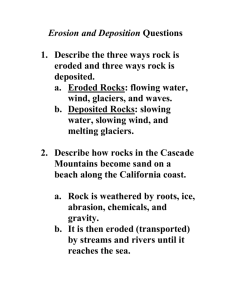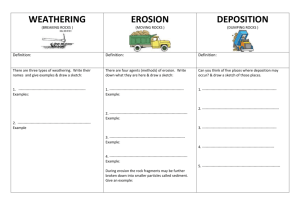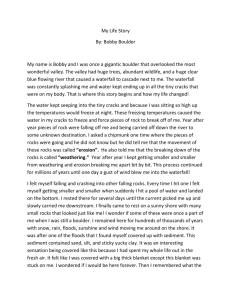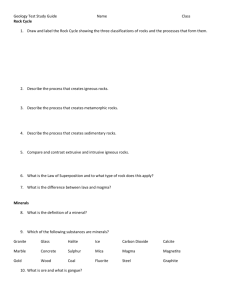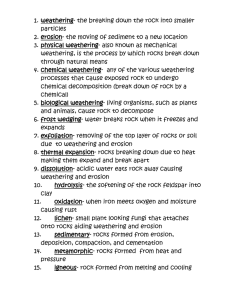Earth Science Study Guide: Resources, Rocks, and Landforms
advertisement
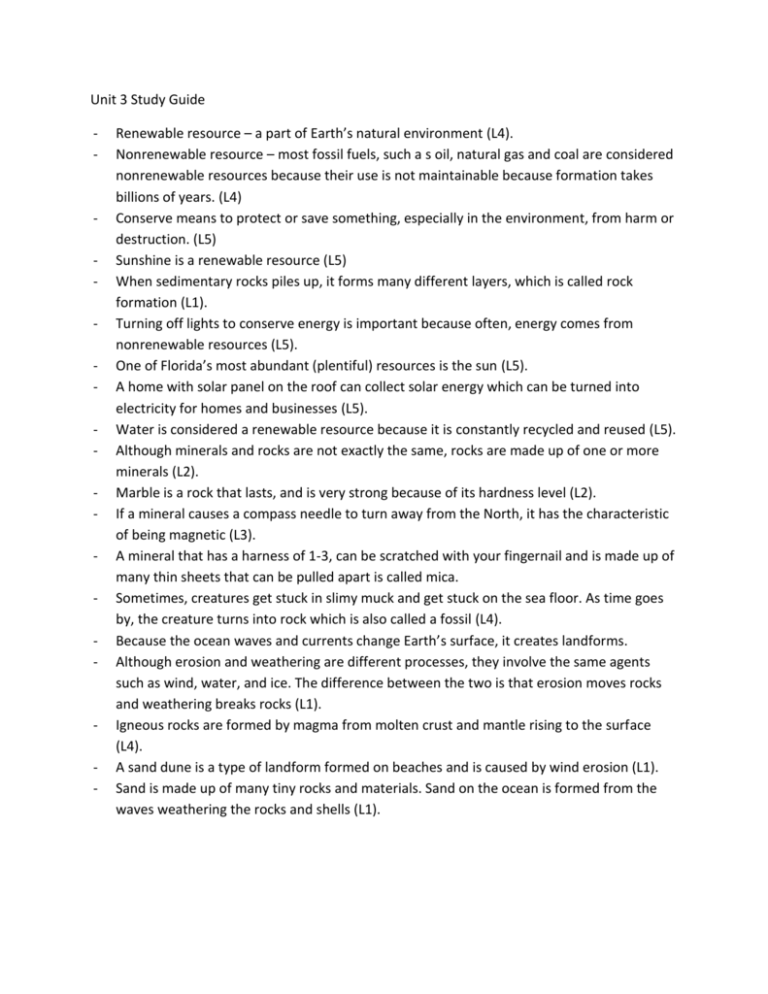
Unit 3 Study Guide - - - Renewable resource – a part of Earth’s natural environment (L4). Nonrenewable resource – most fossil fuels, such a s oil, natural gas and coal are considered nonrenewable resources because their use is not maintainable because formation takes billions of years. (L4) Conserve means to protect or save something, especially in the environment, from harm or destruction. (L5) Sunshine is a renewable resource (L5) When sedimentary rocks piles up, it forms many different layers, which is called rock formation (L1). Turning off lights to conserve energy is important because often, energy comes from nonrenewable resources (L5). One of Florida’s most abundant (plentiful) resources is the sun (L5). A home with solar panel on the roof can collect solar energy which can be turned into electricity for homes and businesses (L5). Water is considered a renewable resource because it is constantly recycled and reused (L5). Although minerals and rocks are not exactly the same, rocks are made up of one or more minerals (L2). Marble is a rock that lasts, and is very strong because of its hardness level (L2). If a mineral causes a compass needle to turn away from the North, it has the characteristic of being magnetic (L3). A mineral that has a harness of 1-3, can be scratched with your fingernail and is made up of many thin sheets that can be pulled apart is called mica. Sometimes, creatures get stuck in slimy muck and get stuck on the sea floor. As time goes by, the creature turns into rock which is also called a fossil (L4). Because the ocean waves and currents change Earth’s surface, it creates landforms. Although erosion and weathering are different processes, they involve the same agents such as wind, water, and ice. The difference between the two is that erosion moves rocks and weathering breaks rocks (L1). Igneous rocks are formed by magma from molten crust and mantle rising to the surface (L4). A sand dune is a type of landform formed on beaches and is caused by wind erosion (L1). Sand is made up of many tiny rocks and materials. Sand on the ocean is formed from the waves weathering the rocks and shells (L1).


